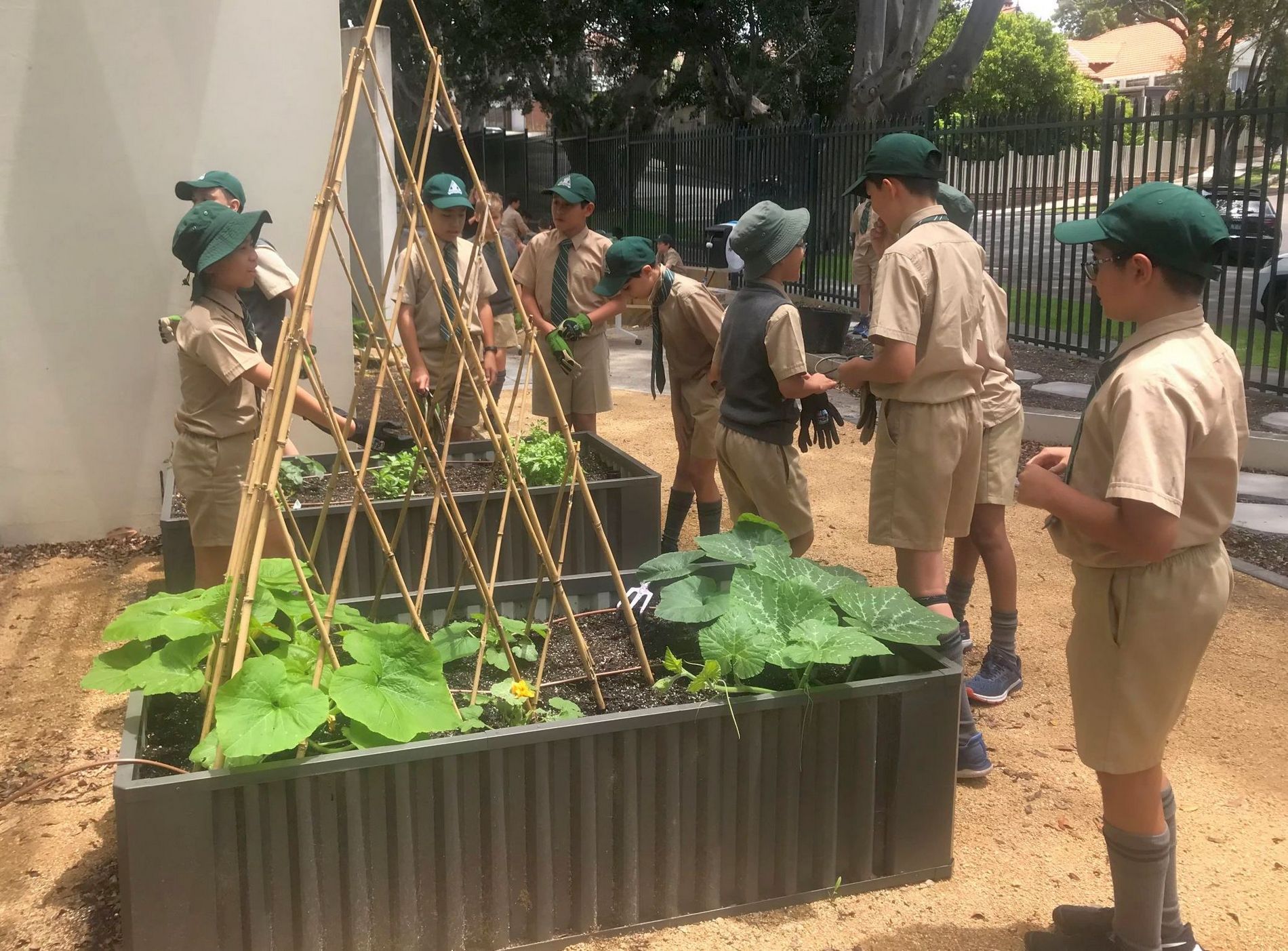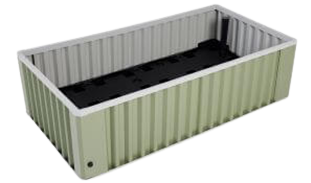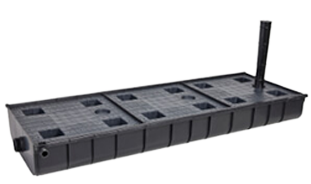School Veggie Garden – a case study
Teaching children about gardening and growing their own food is a wonderfully rewarding activity, with numerous benefits such as learning critical life skills, engaging with the environment, and supporting physical and mental health. However, there are numerous challenges involved in establishing a school garden and integrating gardening and sustainability into the curriculum.
In this post, we’ll take a look at how Trinity Grammar got their school veggie garden flourishing with WaterUps wicking beds, winning first prize at the Royal Easter Show for their first ever crop! The school has been fortunate to have a great teacher and resources to help get the garden underway, maintain it, and integrate sustainable gardening into the school curriculum. The challenges involved in having a school garden include finding interested and dedicated teachers, establishment costs, gardening expertise, and ongoing maintenance. One of the biggest issues for a school veggie garden is consistent watering over school holidays, especially with the long holidays occurring over summer. Wicking beds offer a great solution to this problem, as filling the reservoirs is easy, ergonomic, and they deliver consistent moisture to plants. This post will explore some of the ways to tackle the challenges of starting a school veggie garden, so that more kids can enjoy the great rewards they offer.
The kids at Trinity Junior School have wonderful support and a dedicated environmental educator with extensive knowledge of horticulture and landscape architecture, as well as a number of WaterUps garden beds that helped them grow their winning harvest. The school have 18 large and 12 small WaterUps garden beds, established late last year as part of the school’s Green Patch Initiative. The pandemic and lockdowns last year posed some extra challenges, but also make the garden space even more rewarding as a place to interact with nature and the community, and learn how to grow your own food. This is particularly valuable for many of the kids at Trinity who live in apartments and might not otherwise have the opportunity to get involved in gardening and growing food. It is a wonderful way for kids to learn how to care for living things and for the land. To produce a winning basket of produce in such a short time was a wonderful achievement for these young students!
Obviously there’s quite a bit of work going on behind the scenes to establish and maintain the garden. At Trinity, they started with one class a week and three Greenpatch spaces, and this proved to be a lot of work. They have since moved to having classes every second week on a rotational basis, for all grades from K-6. During lockdown last year, the school held a special day called Greenpatch Day, which was great for getting kids off the computers and into the garden, learning about simple landscape design ideas, preparing soil, and other gardening basics. The team from WaterUps helped with preparing the soil for the garden beds, showing how to layer the different elements like coir, fertiliser, and potting mix. A crop rotation system was established, with six different families of vegetables moved around the garden beds each season to help manage pests, diseases, and soil health. The kids love gardening and get excited about the lessons, finding it very motivating and engaging.
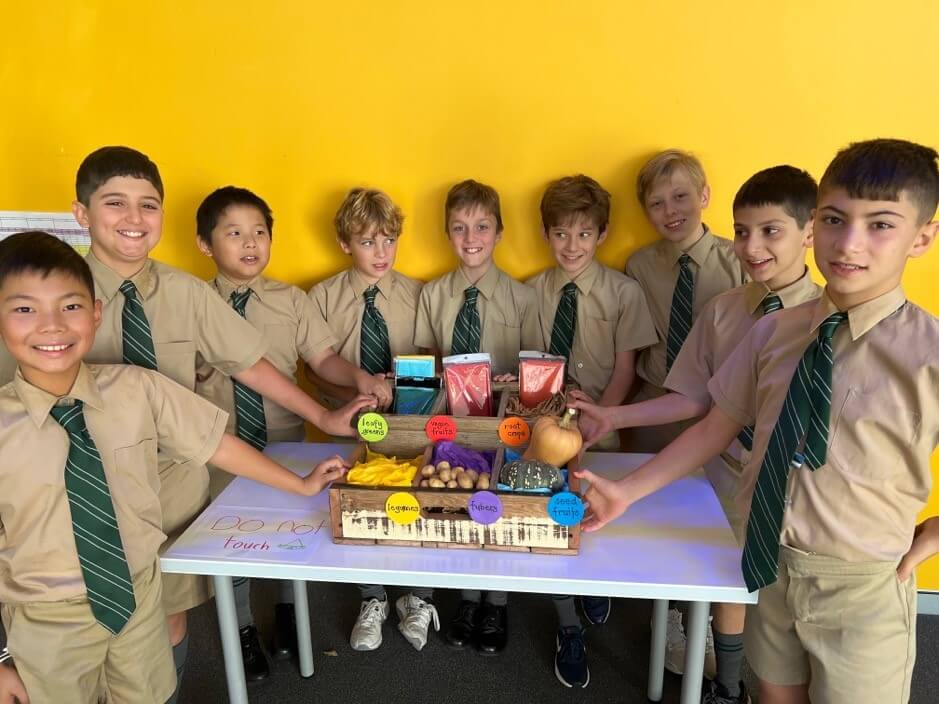
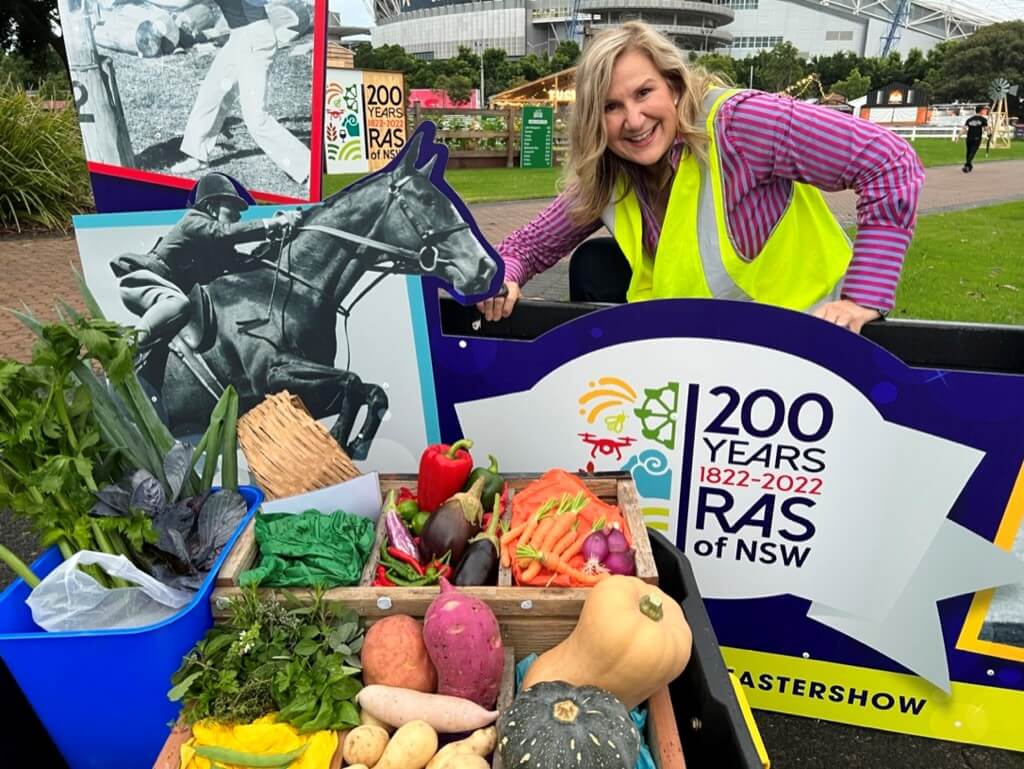
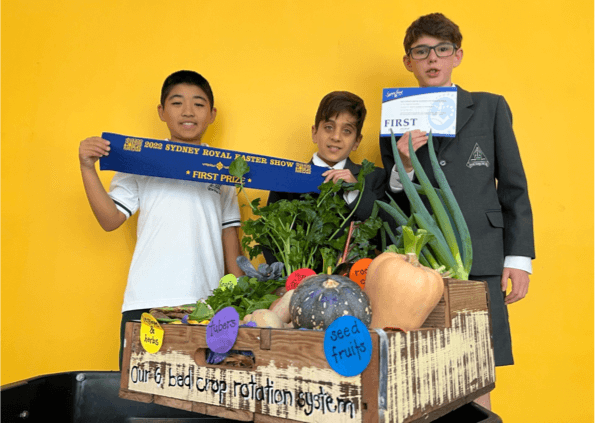
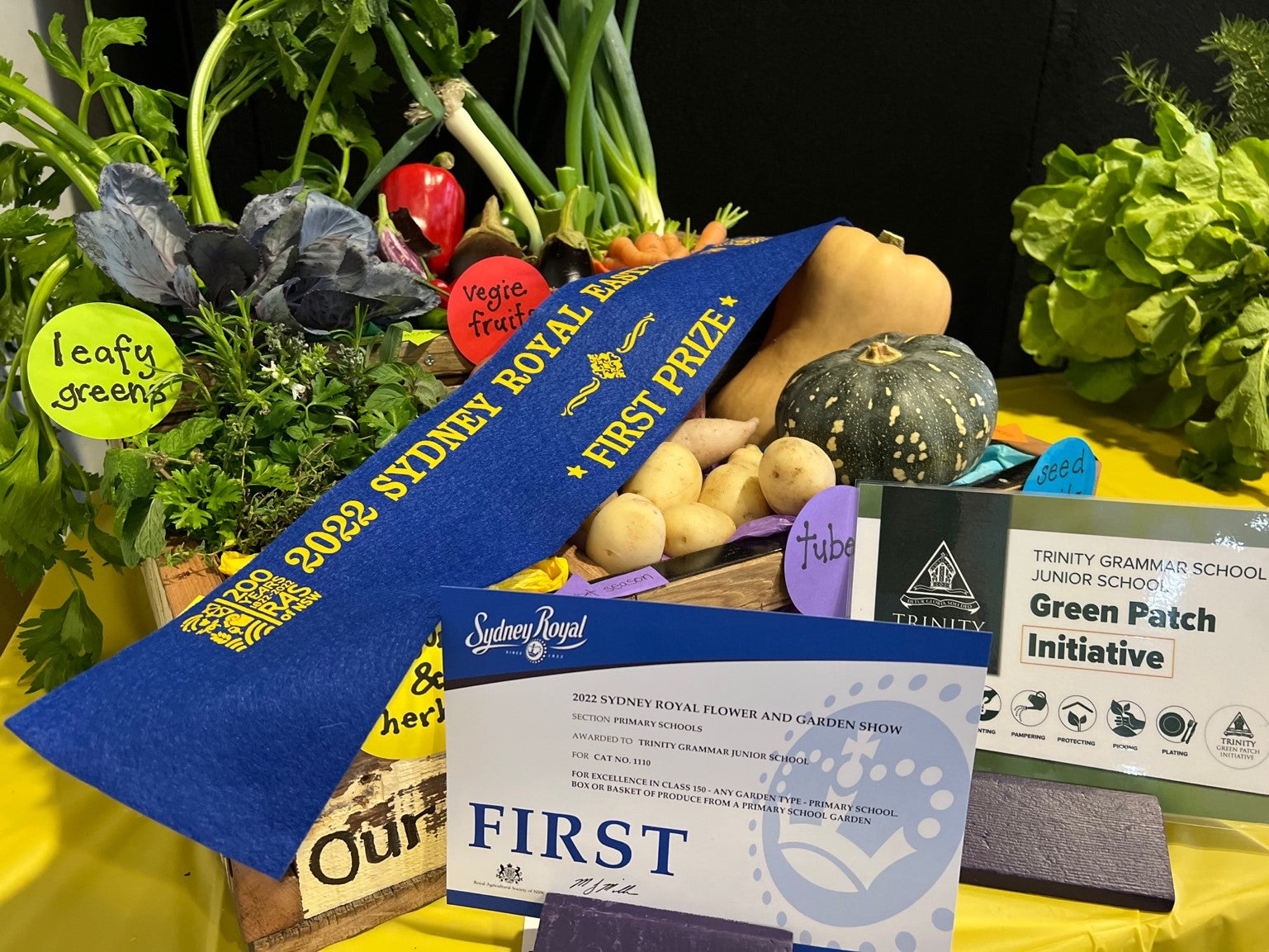
Having a specialist environmental educator has been a huge help for the school garden program at Trinity, but there are a number of options to get outside help in to run a school veggie garden. One organisation that provide services like this is Pocket City Farms (PCF), a community urban farm in Camperdown, Sydney. They are a registered charity that offer a range of programs for schools, with staff who have horticultural knowledge as well as experience teaching children and young people. At the moment, PCF have a “School Excursions” program, where schools can come and visit the farm in Camperdown and engage students in the garden. This is a great way for schools to get ideas about what they might want to put in for their own school gardens, as well as getting kids interested in the process.
In terms of offering support to schools wanting to start or maintain a sustainable gardening program, PCF have offered a “School Incursions” program to come on-site and they will soon be merging with Seed Harvest Spoon to provide this kind of on-site support. Seed Harvest Spoon are a not-for-profit offering education programs for early childhood and primary schools around sustainability and growing food. One of the main focuses of these education programs will be working with what a school already has to develop a garden and sustainaibility program, rather than installing a new large garden that can’t be maintained easily. This includes making use of resources that are already there, like using food scraps from the school in compost or worm farming, to teach kids about how to reduce waste by transforming it into something useful. Their education programs give kids the experience to see the whole life cycle of a plant, from seed to table to worm farm/compost, and back to the soil. It also gets them interested in plant foods and tasting different vegetables and fruits, because they can see exactly where the food is coming from, how it was grown, and they’re invested in the process.
For more information on setting up a school veggie garden, there are some useful links on Sustainable Schools NSW about integrating gardening and environmental education into the curriculum. The Stephanie Alexander Kitchen Garden Foundation has a regularly updated list of grants available that is quite comprehensive, covering all states and territories (“Grants List” at https://www.kitchengardenfoundation.org.au/). Another good source of information is this Learning Centre from Junior Landcare, part of Landcare Australia. It has a range of lesson plans covering sustainability and First Nations perspectives, including food production and waste management.
By Emma Stewart

